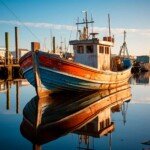Premier Listings for Alert Bay
The oldest community in North Vancouver Island, the Cormorant Island fishing community of Alert Bay was an important trading centre for early residents in the area and has been the traditional home of the Namgis First Nation for several thousand years.
Alert Bay and Cormorant Island have an interesting history. Captain George Vancouver anchored his vessel, the HMS Discover, at Xwalkw (mouth of the ‘Namgis River) in the late 1700s. History of Alert Bay.
Alert Bay was named by Captain G.H Richards of the Royal Navy in 1860 after HMS Alert, a screw corvette serving on the Pacific station at the time.
Today, Alert Bay is a well-known centre for the powerful resurgence of Native culture and hosts some of the region’s finest historical and cultural artifacts, First Nations paintings and totem poles. In addition to the unique opportunity to enjoy the rich cultural heritage of the island, visitors can enjoy many activities such as whale watching, eco-tours, kayaking, hiking and biking.
Alert Bay, offers visitors a unique opportunity to experience the rich cultural heritage of native and non-native residents.
Population: 1,248: Alert Bay Village 556, Indian Reserves 692
Location: Alert Bay lies cradled in the arms of Cormorant Island, easily accessible by a scenic ferry ride from Port McNeill on the northeast coast of Vancouver Island.
Memorial totem poles may be viewed from the road at the Namgis Burial Grounds, an old native cemetery and one of the few remaining locations on the BC coast where totems remain undisturbed on their original site. The grounds of the burial site are closed to the public, but the totem poles are easily viewed from the roadside. Pick up a brochure at the Visitor Centre for background information on the totem poles.
Visit the U’mista Cultural Centre to view elaborately carved cedar masks depicting the Potlatch ceremony of the Kwakwaka’wakw People. This first-rate museum and cultural showcase is a must-see for anyone interested in Northwest Coast art and culture. The Cultural Centre is dedicated to forging links between the Kwakwaka’wakw past, present and future.
World’s Tallest Totem Pole: Alert Bay proudly boasts the world’s tallest totem pole, at 173 feet (two parts), carved by six Kwakwaka’wakw artists. Unlike most totem poles that are specific to a particular family, the fourteen figures depicted on this pole are acquired through marriage and represent some of the tribes of the Kwakwaka’wakw nation.
The Alert Bay Big House was built in 1963 and modeled on the traditional residence of the Kwakwaka’wakw. The building is primarily used for potlatches. The original Big House was lost to a fire in August 1997 before being rebuilt and opened again in May, 1999.
During the summer season, the T’sasala Cultural Group perform regularly in the community’s Big House. All dances and songs are presented with pride and have the Elders approval, and remain unchanged since our creator gave them to us. The most important of the sacred dances, is the Hamat’sa or cannibal dance. This dance is the re-enactment of a young mans possession by a cannibal spirit living at the North end of the world. Dance and Songs along with rituals tame the man, bringing him back to his human self. The dance group also performs regularly for visiting cruise ships and is available for special performances by arrangement.
Christ Church, prefabricated in England, with one window portraying 100 years of history on the island, is one of the buildings of historic interest in Alert Bay.
Visit historic sites throughout the village, including the Library-Museum that displays Kwakwaka’wakw artifacts and a collection of over 6,500 historic photographs, St. George’s Chapel, and the Old Power House. A few hours here will take you far back in time.
Services: Accommodation in Alert Bay includes hotels, inns, bed and breakfasts, campgrounds and cabins. Browse through Alert Bay’s shops, galleries and studios for unique arts and crafts. The village provides a range of services, including financial (ATM), pharmacy, gift shops, liquor store, laundry, full-service salon and a gym, all located within walking distance of the ferry. A variety of restaurants are conveniently located in the downtown area. A breakwater and government wharf, located close to the marine fuel docks, provides safe moorage, laundry and shower services.
Wildlife: Alert Bay’s surrounding waterways are home to Killer Whales, Sea Lions, Porpoises and Dolphins.
Stroll along the boardwalk at the Alert Bay Ecological Reserve, an ecological treasure trove of sights and sounds and a paradise for bird-watchers and botanists. A series of trails wind around the forest area and the boardwalk crosses the marsh, allowing visitors a close view of the swamp’s ecosystem. Cedar snags, hemlocks and pine trees draped with moss provide an eerie charm and beauty.
Alert Bay is one of the better-known destinations for fishing, scuba diving and whale watching. Fishing and whale watching charters are available on Cormorant Island and there are several scuba diving operations on nearby Vancouver Island.
Close to Alert Bay in Johnstone Strait is the largest concentration of Killer whales in the world at Robson Bight (Michael Biggs) Ecological Reserve, where up to 200 Orcas arrive each summer to rub on gravel beaches at the mouth of the Tsitika River. Whale watching companies based in Alert Bay, Port McNeill, Sointula, Telegraph Cove, Sayward and Port Hardy all operate tours to Robson Bight.
To the northeast of Alert Bay across the Labouchere Passage is the Broughton Archipelago Marine Provincial Park, a wilderness area consisting of a maze of several small islands, numerous inlets and adjacent foreshore at the southern extremity of Queen Charlotte Strait, off the west coast of Gilford Island. The islands in the marine park are undeveloped and are largely undiscovered. Facilities are limited to a day-use recreation. The numerous remote, solitary islands incorporated in the park provide unlimited and unique fishing and swimming opportunities, and are fabulous for exploring by kayak.
Cormorant Channel Marine Provincial Park is located on either side of Weynton Pass in the Cormorant Channel, due east of Alert Bay.
Fishing: Blackfish Sound east of Cormorant Island is productive for salmon fishing, offering feeder chinooks throughout the year. The first migratory chinooks appear in late May through to August, followed by the sockeye (June to August), pinks (July to August), coho in mid July, northern coho in September and chum salmon from late August through to October. Winter chinook end off the year by passing through toward the end of December. Halibut fishing commences in April to June, and continues through the summer to September – open water depths of 200 to 400 feet are most productive. Concentrate on Richards Channel, Ripple Passage and Bolivar Passage. Halibut around the 100 lb mark are brought in regularly, with monsters of over 200 lbs caught occasionally.
Island Hopping: Travelling between the Southern Gulf Islands and Northern Gulf Islands can be accomplished in small hops. Each of these islands is a world unto itself, each with its own history, culture and colourful characters – each island deserves at least a day or two for exploring.
B.C. Ferries operates a ferry service from Port McNeill to Alert Bay and the small, picturesque fishing village of Sointula on Malcolm Island.
Alert Bay is the gateway to Knight Inlet and Kingcome Inlet.
Port McNeill on Vancouver Island is a thriving community on the northeastern coast of Vancouver Island and the centre of North Island logging operations. The town’s sheltered harbour is also a launching point for sportfishing enthusiasts who test their skills in the maze of waterways between Vancouver Island and the BC mainland.
Premier Business Directory in Alert Bay, Vancouver Island – Small Business BC
No results.



